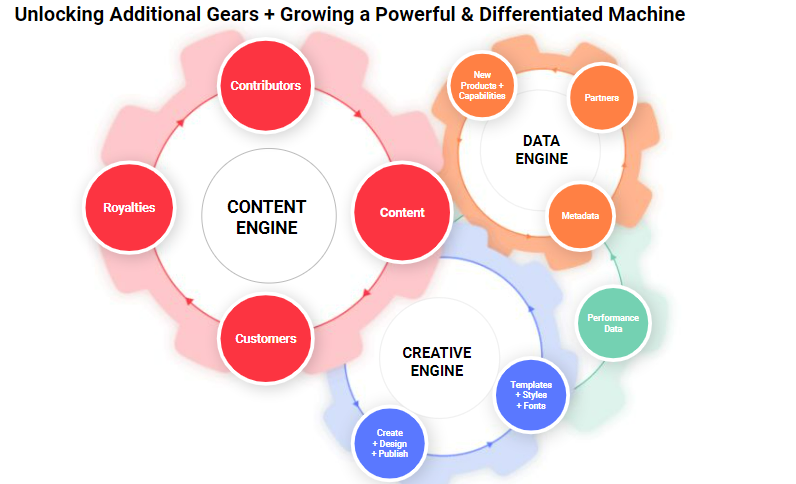Is Shutterstock mapping the way forward for IP owners in the generative AI age or making an epic business model mistake?
Check back in a few years.
Shutterstock, which has more than 615 million images enriched with metadata and 2.2 million global customers, will provide training data for OpenAI models. Shutterstock and OpenAI launched a partnership in January, but the expanded deal will give OpenAI a license to access Shutterstock training data for image, video and music libraries and metadata.
In return, Shutterstock gains priority access to OpenAI technology and continues to use DALL-E's generative AI tools. In addition, Shutterstock and OpenAI will collaborate on bringing generative AI to the GIPHY platform.
Last week, Shutterstock said that it will indemnify enterprise customers following a similar move by Adobe.
The takeaway is that Shutterstock sees generative AI as a way to expand its total addressable market. Shutterstock will use generative AI tools to drive subscriptions and licenses and improve its products. What remains to be seen is whether granting OpenAI access to Shutterstock's first party data will be a business risk.
A historical comparison would be Starz, which licensed its catalog to Netflix in 2008. Netflix then used the Starz catalog to build its streaming business. Starz pulled its content from Netflix in 2011.
Other companies with extensive media catalogs have waffled between taking money upfront and licensing content to digital platforms and keeping it exclusive.
Whether Shutterstock regrets granting OpenAI access to training data remains to be seen. Shutterstock's e-commerce channel is self-serve and is 60% of the company's business. Those subscribers could ultimately choose OpenAI in the future. However, Shutterstock has its own generative AI offerings too.
Shutterstock CEO Paul Hennessy said on the company's first quarter earnings call that generative AI requires "experimentation at scale so we understand this new market."
Hennessy said generative AI drives engagement for its platform and enables other companies to create products by licensing its data. He said:
"We are aggressively investing in bringing generative AI to our customers. After launching our AI image generation platform in partnership with OpenAI in January, we had last reported that users had created 3 million assets in the two weeks immediately following the launch. From the three months since inception, almost 1 million users have created more than 20 million assets on our platform. To put that in context, Shutterstock averaged 10 million new images every quarter since 2020, and so the pace thus far in generative images created far exceeds the growth we’ve seen historically in our content engine.
Although it’s too early to provide any definitive statements on generative AI’s revenue potential, I’m excited to report some early indicators that speak to high engagement and the exciting potential of this new technology across the entire user journey."
To Hennessy there's no conflict between building generative AI products with Shutterstock's first party data and licensing it to others to grow its total contract value.

"In addition to the major investments we’re making in developing and delivering generative AI for our customers, we continue to be highly encouraged by our pipeline of data partnerships to help large tech companies train their models to develop their own generative AI products and solutions. The need to use meta data for generative AI model training is expanding, and we are seeing new companies invest with urgency to build commercial products within their core area of focus. We are also seeing our pipeline expand for existing customers across multiple asset types: customers who started with images looking at video, and customers looking at music and 3D content for model training. The use cases for training data are also expanding and we are seeing opportunities that are increasingly industry-specific and for specific commercial products."
Related:
- JPMorgan Chase: Digital transformation, AI and data strategy sets up generative AI
- Rivian: AI, data power customer experiences
- How JetBlue is leveraging AI, LLMs to be 'most data-driven airline in the world'
- AI is everywhere including your supermarket, homebuilder and soup
- How Home Depot blends art and science of customer experience
- Goldman Sachs CIO Marco Argenti on AI, data, mental models for disruption
- Greystone CIO Niraj Patel on generative AI, creating value, managing vendors
- Accenture's Paul Daugherty: Generative AI today, but watch what's next
- Box CEO Levie on generative AI, productivity and platform neutrality


